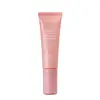What's inside
What's inside
 Key Ingredients
Key Ingredients

 Benefits
Benefits

 Concerns
Concerns

No concerns
 Ingredients Side-by-side
Ingredients Side-by-side

Water
Skin ConditioningCaprylic/Capric Triglyceride
MaskingSaccharide Isomerate
HumectantSchizophyllan
HumectantPentylene Glycol
Skin ConditioningButylene Glycol
HumectantPropanediol
SolventIsononyl Isononanoate
EmollientNiacinamide
SmoothingXylitylglucoside
HumectantAnhydroxylitol
HumectantXylitol
HumectantLaureth-30
CleansingHydroxyethylcellulose
Emulsion StabilisingAcetyl Dipeptide-1 Cetyl Ester
Skin ConditioningMagnesium Aspartate
Skin ConditioningZinc Gluconate
Skin ConditioningCopper Gluconate
Skin ConditioningPhenoxyethanol
PreservativePortulaca Oleracea Extract
Skin ConditioningCeramide NP
Skin ConditioningPEG-7 Glyceryl Cocoate
EmulsifyingAsiaticoside
AntioxidantAsiatic Acid
Skin ConditioningMadecassic Acid
Skin ConditioningEthylhexylglycerin
Skin ConditioningPolyacrylate-13
Polyisobutene
Polysorbate 20
EmulsifyingSorbitan Isostearate
EmulsifyingAloe Barbadensis Leaf Juice
Skin ConditioningPotassium Sorbate
PreservativeSodium Benzoate
MaskingHydrolyzed Royal Jelly Protein
Skin ConditioningGlycerin
HumectantCalendula Officinalis Flower Extract
MaskingSodium Acrylates Copolymer
Lecithin
EmollientHyaluronic Acid
HumectantAllantoin
Skin ConditioningDisodium EDTA
Carbomer
Emulsion StabilisingTocopheryl Acetate
AntioxidantDipotassium Glycyrrhizate
HumectantMaltodextrin
AbsorbentWater, Caprylic/Capric Triglyceride, Saccharide Isomerate, Schizophyllan, Pentylene Glycol, Butylene Glycol, Propanediol, Isononyl Isononanoate, Niacinamide, Xylitylglucoside, Anhydroxylitol, Xylitol, Laureth-30, Hydroxyethylcellulose, Acetyl Dipeptide-1 Cetyl Ester, Magnesium Aspartate, Zinc Gluconate, Copper Gluconate, Phenoxyethanol, Portulaca Oleracea Extract, Ceramide NP, PEG-7 Glyceryl Cocoate, Asiaticoside, Asiatic Acid, Madecassic Acid, Ethylhexylglycerin, Polyacrylate-13, Polyisobutene, Polysorbate 20, Sorbitan Isostearate, Aloe Barbadensis Leaf Juice, Potassium Sorbate, Sodium Benzoate, Hydrolyzed Royal Jelly Protein, Glycerin, Calendula Officinalis Flower Extract, Sodium Acrylates Copolymer, Lecithin, Hyaluronic Acid, Allantoin, Disodium EDTA, Carbomer, Tocopheryl Acetate, Dipotassium Glycyrrhizate, Maltodextrin
Water
Skin ConditioningTrehalose
HumectantPropanediol
SolventGlycerin
HumectantSodium Acrylate/Sodium Acryloyldimethyl Taurate Copolymer
Emulsion StabilisingPanthenol
Skin Conditioning1,2-Hexanediol
Skin ConditioningCeramide NP
Skin ConditioningCeramide AP
Skin ConditioningPhytosphingosine
Skin ConditioningCholesterol
EmollientCeramide EOP
Skin ConditioningC15-19 Alkane
SolventLauryl Glucoside
CleansingTrisodium Ethylenediamine Disuccinate
Sodium Lauroyl Lactylate
EmulsifyingXanthan Gum
EmulsifyingCarbomer
Emulsion StabilisingPhenoxyethanol
PreservativeEthylhexylglycerin
Skin ConditioningCitric Acid
BufferingWater, Trehalose, Propanediol, Glycerin, Sodium Acrylate/Sodium Acryloyldimethyl Taurate Copolymer, Panthenol, 1,2-Hexanediol, Ceramide NP, Ceramide AP, Phytosphingosine, Cholesterol, Ceramide EOP, C15-19 Alkane, Lauryl Glucoside, Trisodium Ethylenediamine Disuccinate, Sodium Lauroyl Lactylate, Xanthan Gum, Carbomer, Phenoxyethanol, Ethylhexylglycerin, Citric Acid
 Reviews
Reviews

Ingredients Explained
These ingredients are found in both products.
Ingredients higher up in an ingredient list are typically present in a larger amount.
Carbomer is a polymer of acrylic acid. Its main role is to create a gel consistency.
A high amount of carbomer can cause pilling or balling up of products. Don't worry, most products contain 1% or less of carbomer.
Ceramide NP is a type of ceramide and formally known as ceramide 3.
Ceramides are intercellular lipids naturally found in our skin that bonds dead skin cells together to create a barrier. They are known for their ability to hold water and thus are a great ingredient for dry skin.
Ceramides are an important building block for our skin barrier. A stronger barrier helps the skin look more firm and hydrated. By bolstering the skin ceramides act as a barrier against irritating ingredients. This can help with inflammation as well.
If you would like to eat ceramides, sweet potatoes contain a small amount.
Read more about other common types of ceramides here:
Ceramide AP
Ceramide EOP
Ethylhexylglycerin (we can't pronounce this either) is commonly used as a preservative and skin softener. It is derived from glyceryl.
You might see Ethylhexylglycerin often paired with other preservatives such as phenoxyethanol. Ethylhexylglycerin has been found to increase the effectiveness of these other preservatives.
Glycerin is already naturally found in your skin. It helps moisturize and protect your skin.
A study from 2016 found glycerin to be more effective as a humectant than AHAs and hyaluronic acid.
As a humectant, it helps the skin stay hydrated by pulling moisture to your skin. The low molecular weight of glycerin allows it to pull moisture into the deeper layers of your skin.
Hydrated skin improves your skin barrier; Your skin barrier helps protect against irritants and bacteria.
Glycerin has also been found to have antimicrobial and antiviral properties. Due to these properties, glycerin is often used in wound and burn treatments.
In cosmetics, glycerin is usually derived from plants such as soybean or palm. However, it can also be sourced from animals, such as tallow or animal fat.
This ingredient is organic, colorless, odorless, and non-toxic.
Glycerin is the name for this ingredient in American English. British English uses Glycerol/Glycerine.
Learn more about GlycerinPhenoxyethanol is a preservative that has germicide, antimicrobial, and aromatic properties. Studies show that phenoxyethanol can prevent microbial growth. By itself, it has a scent that is similar to that of a rose.
It's often used in formulations along with Caprylyl Glycol to preserve the shelf life of products.
Propanediol is an all-star ingredient. It softens, hydrates, and smooths the skin.
It’s often used to:
Propanediol is not likely to cause sensitivity and considered safe to use. It is derived from corn or petroleum with a clear color and no scent.
Learn more about PropanediolWater. It's the most common cosmetic ingredient of all. You'll usually see it at the top of ingredient lists, meaning that it makes up the largest part of the product.
So why is it so popular? Water most often acts as a solvent - this means that it helps dissolve other ingredients into the formulation.
You'll also recognize water as that liquid we all need to stay alive. If you see this, drink a glass of water. Stay hydrated!
Learn more about Water